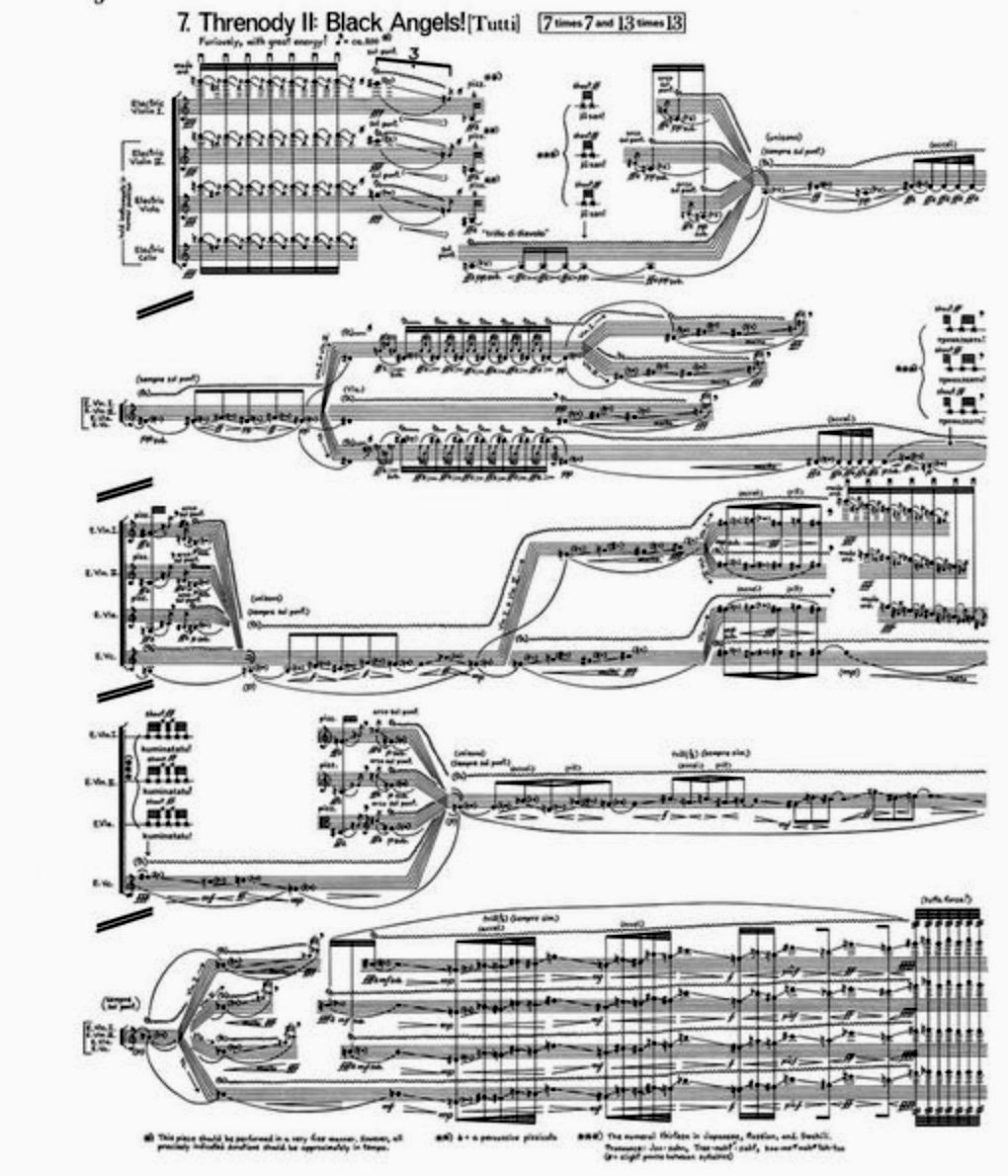


We combine the distant reverence of the chorale, the personal longing of the aria, and the aggressive primality of the percussion. This is the culmination that combines multiple elements throughout the piece - the chorale is played with 2 violins and viola with metal-capped fingers hammering away as their pitches are gradually adjusted as glissando while the cello sings in its highest register (evoking the above-mentioned God Music). My favorite part is the reprise of the Sarabanda de la Muerte Oscura near the end at around 18:30. The first Night of the Electric Insects episode is a roaring, harsh initial statement, but the reprise sounds oddly neutral and tragic to me, as if the music momentarily threatens to declare that the personal journey taken through the piece had been for nothing and won't receive fulfillment. Or the reprise of the Night of the Electric Insects episode near the end of the work. the contrast between the initial otherworldly Lost Bells section and its reprise - to me nostalgic and disembodied, even bringing in part of the Sounds of Bones and Flutes. Of course, Crumb isn’t using traditional harmony (note the bassline motion aka chord inversions in the Death and the Maiden quotation or the crystal glasses accompanying the cello in God Music) or sonata form, but a lot of that kind of aesthetic sensibility is there. These ideas get reprised, recapitulated, and juxtaposed, similar to how a romantic composer would. Later episodes introduce percussive dances, a foreboding Dies Irae plainchant, chorales (including a shadowy quotation of Schubert’s Death and the Maiden, and an original chorale episode Sarabanda de la Muerte Oscura), soulful aria singing (particularly the high cello melody in God Music). The piece begins with dissonant and aggressive tremolos/glissandos in its initial Night of the Electric Insects episode. These 13 episodes are in stark contrast to one another, and yet as the piece progresses the content introduced in these episodes gets combined, compared, or re-contextualized.

Romantic narrative sensibility is not the only kind of narrative sensibility, but it does pervade this work.īlack Angels is a single-movement with 13 episodes. It is a mid/late 20th-century work that, while not outwardly neoromantic sounding in the usual sense, contains a romantic narrative sensibility.

Inspired by TalkingHead’s wonderful post on narrative arc in Denis Smalley’s Pentes (don’t miss it, go check it out!), I felt like sharing a few of my thoughts on George Crumb’s Black Angels (1970) for electric string quartet with players doubling on percussion.


 0 kommentar(er)
0 kommentar(er)
